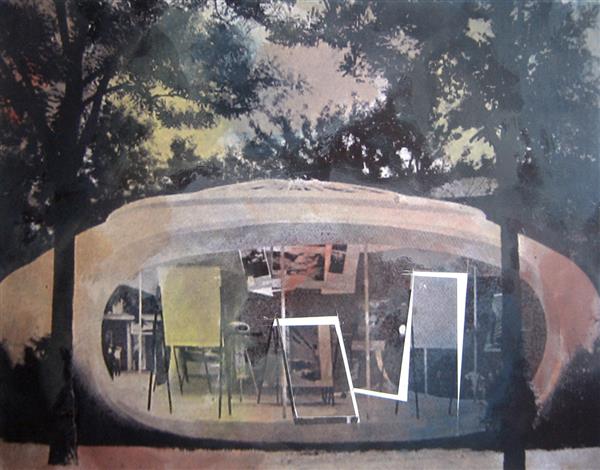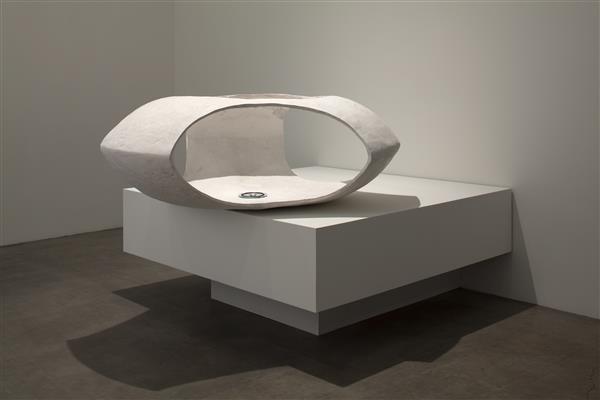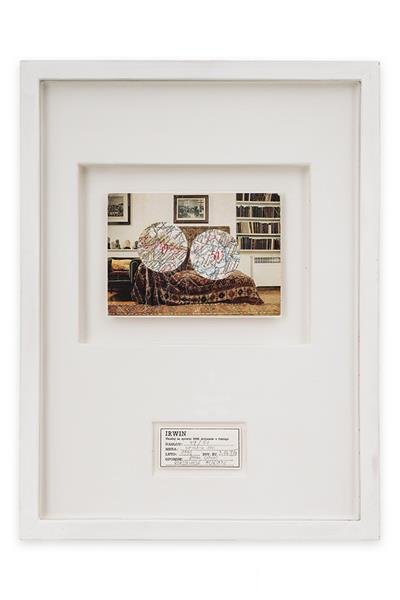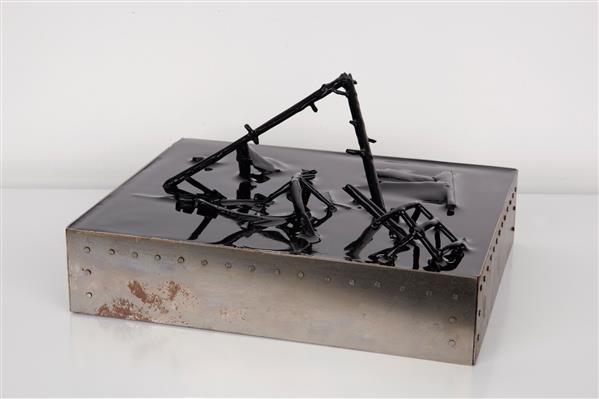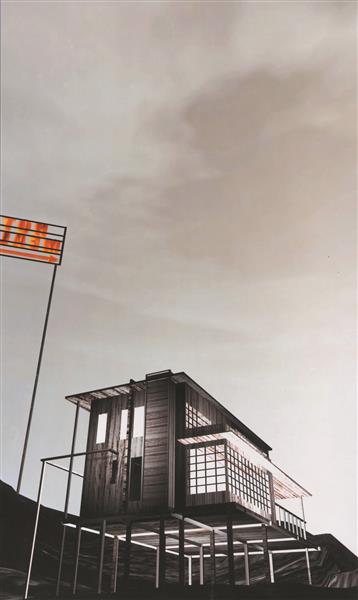Lost Pavilion (collages)
David Maljković
7 collages
each 26 × 39 cm
2008
Acquisition 2010
Inv. No. 0200d-j
In his works, David Maljkovic, who was born in 1973, deals with what has been forgotten. He examines places and architectural structures in his native country Croatia, thereby focusing on the manifestations of Modernism. He is not interested in the style’s monumental or constructional qualities, but in the processes and patterns lying behind an object’s creation, use, and possible demolition. He deals with examples “in which the ideas of universal progress are connected to a specific understanding of Socialism as a potentially radical, experimentally modernist concept.”1
The videos These Days (2005) and Lost Memories from These Days (2006), as well as the multimedia work Lost Pavilion, share associations with the history of the Zagreb Trade Fair. Situated near the satellite city of Novi Zagreb, which was being erected more or less at the same time, this commercial center was to offer an economic forum to both Communist and Capitalist countries from 1956 on. Indeed, the Zagreb Trade Fair became one of the few trading hubs that was used by both the US and its allies and the USSR and its sister states. The trade fair’s concept rather resembled that of a universal exhibition, with the countries being represented in especially built pavilions.2
Whereas the videos mentioned above deal with the Italian pavilion by Giuseppe Sambito, the work owned by the evn collection is about the US pavilion, designed by John M. Johansen (b. 1916) as early as 1956. By then, the architect, a member of the “Harvard Five,” a group initially influenced by Walter Gropius, had adopted free, biomorphic forms, thus clearly abandoning the distinct rectilinearity of the Bauhaus vocabulary. The materiality of concrete allowed for organic and expressive shapes that created an ideological contrast to the industrially produced plants of Real Socialism.
One of the architect’s remarks suggests his discontent with the realization of the pavilion: “It was not, however, a happy experience: Johansen complained that the Yugoslav concrete, and workers, were of low quality, and the structure consequently required secondary support.”3 Is it due to these inadequacies that the pavilion no longer exists? For his “reconstruction,” Maljkovic used a different material to be on the safe side, namely Acrystal, a synthetic resin. He placed Johansen’s shell, now freed from Communism’s prefabricated construction methods, on a classical, modern pedestal sounding deep, humming electronic music by Jan St. Werner of Mouse on Mars. Seven collages, made one year before the sculpture, show Johansen’s original design. David Maljkovic’s work elucidates the connection between economy, politics, and art, thus strengthening our cultural memory and offering an item of collective remembrance. Eventually, it also makes clear that such reminiscences do not end at the borders of a single country.
Heike Maier-Rieper, 2011 (translation: Wolfgang Astelbauer)
1) Fiona Liewehr, press release for the exhibition David Maljkovic. After the Fair 18/03/2009–02/05/2009, Galerie Georg Kargl, Vienna 2009.
2) Felix Prinz, “Flucht zurück nach vorn. David Maljkovic im Kunstverein Nürnberg,” in: Texte zur Kunst, issue no. 72, December 2008, Berlin 2008, 175.
3) Kevin C. Lippert, “John Johansen’s Restless Spirit,” in: John M. Johansen. Nanoarchitecture. A New Species of Architecture, Princeton Architectural Press, New York 2002, 12.
Continue readingExhibitions
Vienna Transit - curated by_Wolfgang Kos, Georg Kargl Fine Arts, Vienna, 2018
We Are All Astronauts: Universe Richard Buckminster Fuller reflected in Contemporary Art, MARTa Herford, Herford, 2011
Publications
evn collection. 2006–2011, Cologne 2011, p. 212–217
